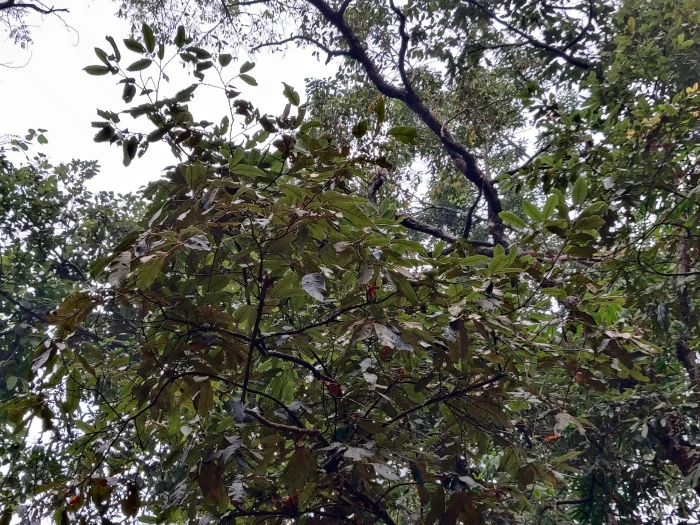Spiny Chinkapin
(Castanopsis tribuloides)
Spiny Chinkapin (Castanopsis tribuloides)
/
/

T R Shankar Raman
CC BY 4.0
Image By:
T R Shankar Raman
Recorded By:
Copyright:
CC BY 4.0
Copyright Notice:
Photo by: T R Shankar Raman | License Type: CC BY 4.0 | License URL: http://creativecommons.org/licenses/by/4.0/ | Rights Holder: T R Shankar Raman | Publisher: iNaturalist | Date Created: 2021-02-26T07:56:30-08:00 |






Estimated Native Range
Climate Requirements
| • Precipitation | 37" - 164" |
| • High Temp. | 64°F - 99°F |
| • Low Temp. | 25°F - 72°F |
Summary
Castanopsis tribuloides, commonly known as the spiny chinkapin, is an evergreen tree native to mixed evergreen forests, particularly in the subtropical and temperate regions of the Himalayas and higher areas of mainland Southeast Asia. It is a member of the Fagaceae family, which includes oaks and chestnuts. This species typically grows to a height of 20-30 meters with a broad crown. The tree’s appearance is characterized by its glossy, leathery leaves, which are oblong to lanceolate in shape, and its spiny cupules that contain one to three edible nuts. The nuts are similar to chestnuts and are a valuable food source for wildlife. The flowering season is from April to May, and the flowers are not particularly showy, being small and inconspicuous.
Castanopsis tribuloides is valued for its hardy nature and ability to thrive in a variety of soil types, although it prefers well-drained, acidic to neutral soils. It requires moderate water and can tolerate both full sun and partial shade. In cultivation, it is used for its edible nuts in Vietnam, and its wood is harvested for firewood through coppicing in India. The tree is also appreciated for its dense foliage, which makes it suitable for shade or as a windbreak in landscape designs. However, gardeners should be aware of its potential to grow large and its slow growth rate when considering it for residential planting.CC BY-SA 4.0
Castanopsis tribuloides is valued for its hardy nature and ability to thrive in a variety of soil types, although it prefers well-drained, acidic to neutral soils. It requires moderate water and can tolerate both full sun and partial shade. In cultivation, it is used for its edible nuts in Vietnam, and its wood is harvested for firewood through coppicing in India. The tree is also appreciated for its dense foliage, which makes it suitable for shade or as a windbreak in landscape designs. However, gardeners should be aware of its potential to grow large and its slow growth rate when considering it for residential planting.CC BY-SA 4.0
Plant Description
- Plant Type: Tree
- Height: 40-80 feet
- Width: 20-40 feet
- Growth Rate: Moderate
- Flower Color: Yellow, Green
- Flowering Season: Spring
- Leaf Retention: Evergreen
Growth Requirements
- Sun: Full Sun, Part Shade
- Water: Medium
- Drainage: Medium, Fast
Common Uses
Edible*Disclaimer: Easyscape's listed plant edibility is for informational use. Always verify the safety and proper identification of any plant before consumption., Low Maintenance
Natural Habitat
Mixed evergreen forests in subtropical and temperate regions of the Himalayas and higher areas of mainland Southeast Asia
Other Names
Common Names:
Scientific Names: Castanopsis tribuloides, Balanoplis tribuloides, Castanea microcarpa, Castanea microcarpa, Castanea tribuloides, Quercus acuta, Quercus acuta, Quercus armata, Quercus caudata
GBIF Accepted Name: Castanopsis tribuloides